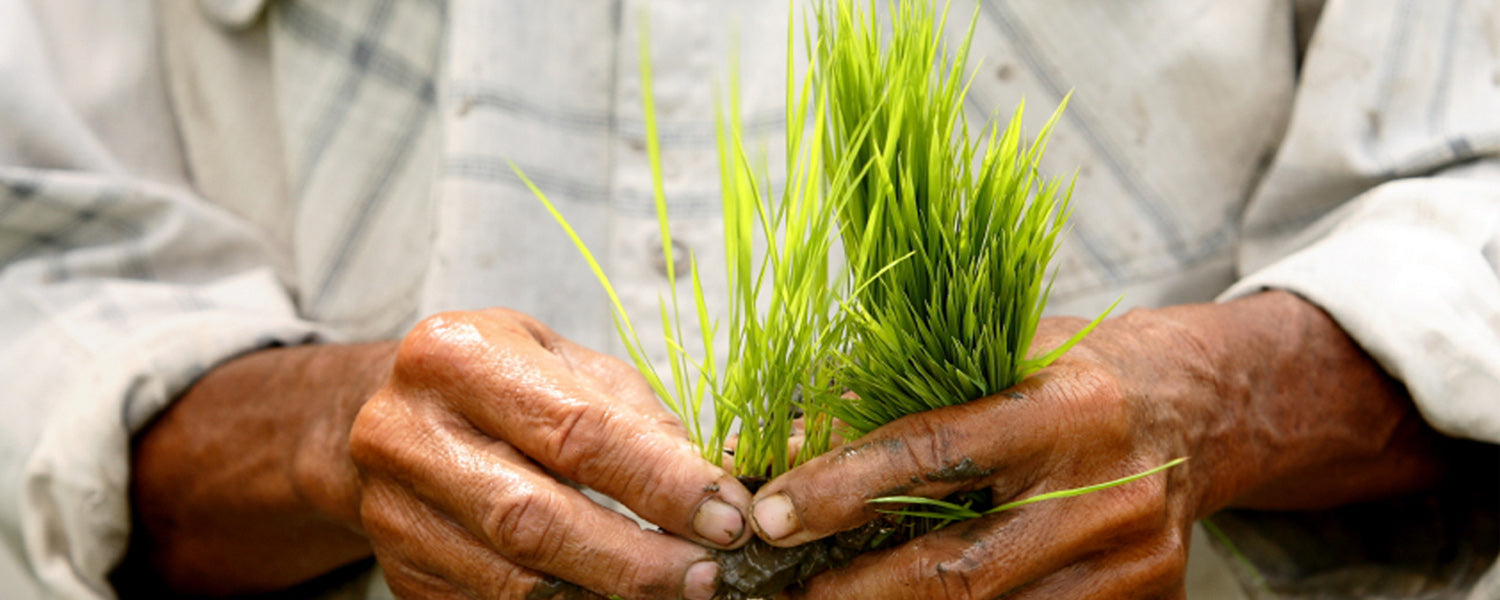Your FAQs
We understand that you might need more information about our products. We have compiled a list of the most frequently asked questions.
RICE
Q: Why are there different colors of rice and what do these differences mean?
A: All rice starts as a whole grain, which means that the germ and bran layer are intact. When these are removed, you have white rice. The most common bran layer for rice is brown. But there are also red and black rices depending on the varieties. There are over 100,000 rice varieties out in the world, and their color varies, just like grapes or tomatoes. In general, the darker the bran layer, the more antioxidants the rice has.
Q: Can I mix my own blend of different colored rice?
A: Different rice has different properties, such as texture, aroma, and cooking time. Therefore, if you decide to mix your own rice, it may not cook evenly. Sunria rice blends are formulated so you are able to cook the rice perfectly every time. Furthermore, we also take into account of its aroma and nutrition profile, to give you the ideal combination.
Q: Does eating rice make you fat?
A: When you consume polished or white rice, you are eating rice that has polish away most nutrients and consuming mostly simple carbohydrates. The shinier or more transparent rice is, the less nutritional value it has. However, when you consume wholegrain rice, you are consuming complex carbohydrate, which has its bran layer and embryo intact. In fact, you are eating one of the healthiest foods in the world that has 15 vitamins and minerals, quality protein, and fiber! The result is that you digest the rice slowly, and you feel fuller for a longer time, and stabilizing your blood sugar level. This helps to manage your appetite and diet.
Q: I see that Sunria also has has white rice. Is this different from other white rice?
A: Our white rice is polished lightly. You can see that it is in fact very opaque or translucent instead of transparent. We understand that some people simply prefer white rice, and we try to minimize the loss of nutrients so people can get more benefits out of white rice.
Q: Will I lose my weight if I eat Sunria rice?
A: Sunria wholegrain rice can help you manage your appetite and diet. Because it is nutrient-dense, you only need half the portion of normal rice. Hunger is a way your body is telling you that you still need more nutrition. When you eat foods that are is nutrient-rich with fiber, you do not need a big portion to feel full.
Q: I see that rice contains fat in the nutrition fact. Can you explain?
A: If you consume unpolished rice, it will contain fats that are present in its rice bran. This is one of the healthiest oil in the world with many health benefits, and contains anti-oxidants, vitamin E, and helps to lower cholesterol. A US famous doctor, Dr. Oz (who is also Oprah Winfrey’s doctor), states that rice bran oil is found by researchers to actually help you lose weight. Watch a video of Dr Oz talking about this oil here.
A: Cooking rice is actually really easy, and is similar to cooking pasta. The only difference is that for pasta, you boil it in big amounts of water, and when it is cooked, you throw the water away. For rice, you put the exact amount of water it needs, and when it is cooked it would have already absorbed all of the water. If can boil water, you can follow Sunria’s simple cooking instruction and have perfect rice every time!
Q: Can I use other liquids aside from water to cook Sunria rice?
A: Yes! In fact, we encourage you to try different ways of cooking and submit your recipe to our website. Sunria rice is able to absorb the flavor of any liquid to make a variety of delicious rice. We suggest you to try stocks (vegetables, chicken, etc…), and you may even flavor the stock with additional herbs or spices if you wish too. Check out more recipes ideas for Sunria rice.
Q: How should I store Sunria rice?
A: It should be stored in cool and dry conditions. If you are not going to use the rice for long periods of time, rice can be kept in the refrigerator and can even be frozen. Exposing the rice to heat and sunlight can cause the rice to go rancid or to develop bugs.
Q: I found some rice bugs in my rice. Should I throw them away?
A: If you see some rice bugs in Sunria rice, do not panic. This is a sign that our rice is truly organic, and no harmful chemicals and pesticides are used to produce the rice. Most conventional rice is heavily fumigated with methyl bromide or phospine, which kills all bugs but makes the rice contaminated with harmful chemicals. In fact, rice is one of the crops that are heavily treated with various chemicals during and after planting. These little creatures are not harmful for your health and you rice can still be consumed. All you need to do is put the rice under the sun, the heat will make them run away.
SUGAR
- White sugar comes in a number of different granule sizes, most people go with granulated white sugar. It’s also called table sugar. The granules inside that package are medium-sized and almost every baked good recipe you’ll find, calls for this type of sugar.
- Brown sugar can be purchased in a variety of colors ranging from light to dark brown. The flavor here is very strong and it seems soft and moist right out of the package. Decades ago, brown sugar was simply white sugar before all of the molasses was taken out. These days, though, brown sugar is white sugar where the molasses has been added back into the mix. The darker the sugar, the more molasses in the package.
A: The amount of nutrients in the molasses added back to brown sugar is miniscule, so you’re not actually getting a healthier product. Moreover, though, these days, the molasses is added back in to make brown sugar, so you’re actually getting a more refined product than you were initially. Sunria Arenga Sugar is different than other brown sugar. Our farmers tapped the sweet sap from Arenga tree and evaporated it with care to preserve its nutrients, to become naturally golden-brown crystals.
Q: Can I use Sunria Arenga Sugar for drinks and beverages?
A: Yes, of course you can! Sunria Arenga Sugar will give a rich flavor and different aroma for your drinks. Pour Sunria Arenga Sugar on your coffee, tea, or even your juice and smoothies to be more delicious yet healthier!
Q: I love baking, is it okay to use Sunria Arenga Sugar for baking?
A: Sure you can, use Sunria Arenga Sugar with 1:1 substitution ratio to brown sugar. If you do wish to substitute Sunria Arenga Sugar for white sugar or brown sugar while you’re baking, there are several things you may want to do. First, remember, brown sugar contains more moisture, so you may need to decrease other wet ingredients in your recipe or increase some of your dry ingredients to compensate. Second, think about texture. If you’re doing a fruit quick bread like a banana or a zucchini bread, you may want a moist, rich texture, so brown sugar can be the perfect way to go.

